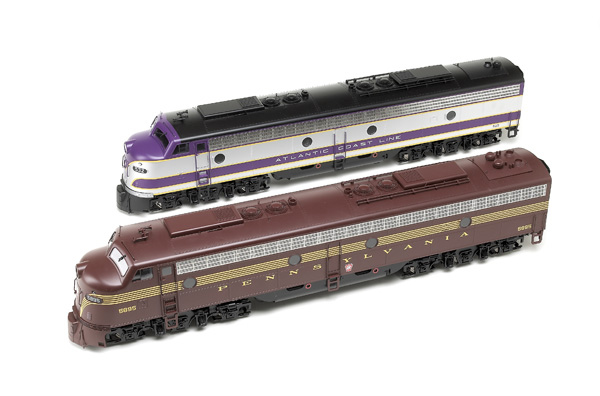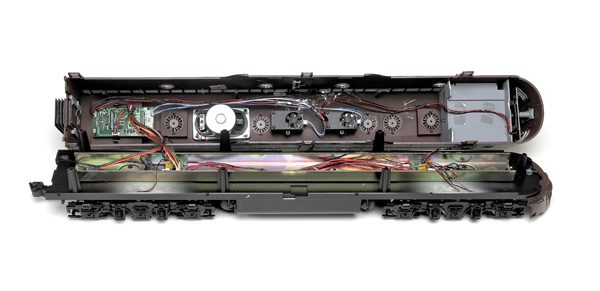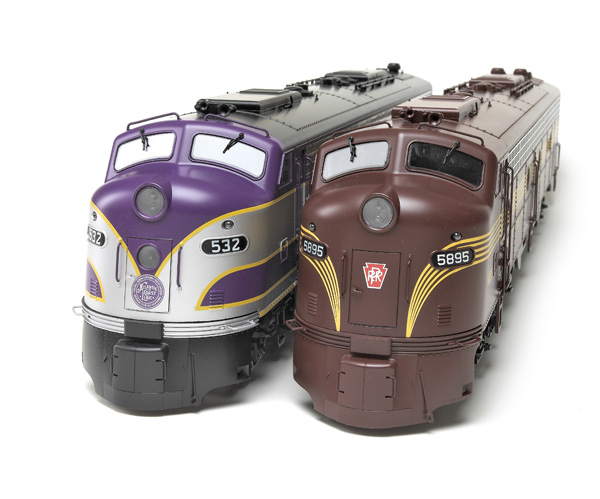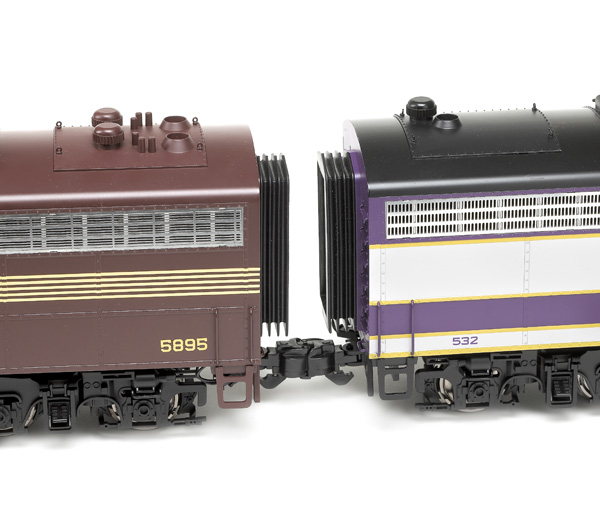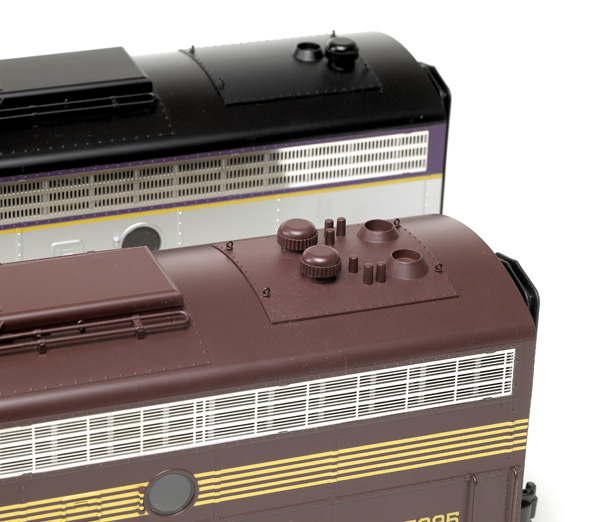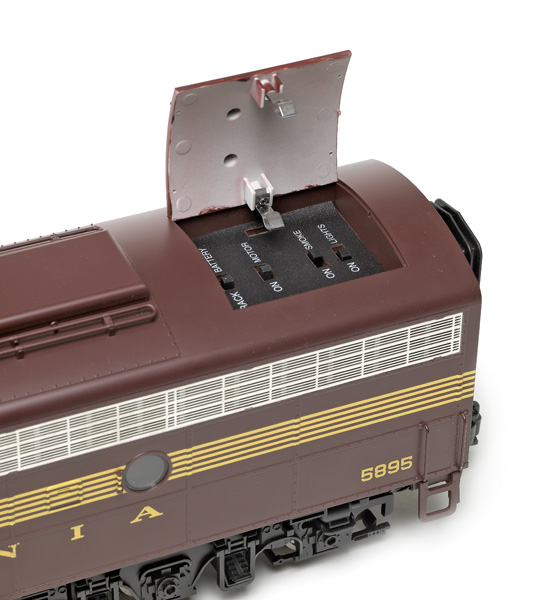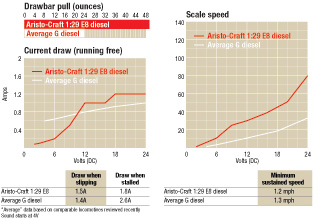Electro-Motive delivered the first E8 diesels in 1949. More than 400 of the cab units served on railroads throughout the United States and some even hauled Amtrak passenger trains during the 1970s.
The paint is smoothly applied on each model and all the lettering and striping is straight and even. The paint scheme on the ACL version matched prototype photos, but there was an error on the PRR E8. On the model the PRR herald on the sides is off center. Prototype photos show that the correct placement of the herald should be under the space between the “Y” and the “L” in the road name on each side.
The model has other roadname-specific details. The PRR model has dual steam generators while the ACL model has one.
Also prototypical, the PRR E8 has a single headlight above the door, while the ACL version has its headlight mounted on the door. The ACL model also has an operating signal light on the nose above the headlight.
The PRR model doesn’t have a train-phone system antenna or lifting lugs along the nose door, items found on most Pennsy E units.
If you use battery power, the E8 can be electrically linked to other cars or locomotives through jumper wires. The wires are located along the front and rear couplers.
To access the other electronics inside the model, I removed seven screws from the locomotive’s frame and then lifted off the shell. The smoke units, speaker, and printed-circuit (PC) board are all mounted under the roof.
The PC board has a 12-pin socket for adding a DCC or radio command control (RCC) system. You must remove the supplied jumper before installing either a DCC decoder or RCC receiver. The PC board also has two-pin and three-pin sockets for installing a sound system.
The E8 is built primarily of plastic but has a metal weight running the length of the chassis. Four motors and metal gear boxes also contribute to its overall heft.
Two can motors power all three axles of each truck. None of the motors have flywheels, so the locomotive stops quickly with no momentum, even from high speed.
I operated the model around a curve of four-foot-radius Micro-Engineering large-scale track without any problems. The E8 would look better on wider-radius curves, especially with streamline passenger cars behind it.
The E8 should have no problem pulling those cars. The locomotive’s exceptional drawbar pull is equivalent to 50 free-rolling large scale cars on straight, level track.
Despite a couple of minor detail quirks, the smooth-performing Aristo-Craft E8 is a great choice to lead passenger operations on your large scale layout.
Price: $420.00, $525.00 (chrome-plated versions, AT&SF and CB&Q)
Manufacturer
Aristo-Craft Trains
698 S. 21st St.
Irvington, NJ 07111-4109
www.AristoCraft.com
Description: Ready-to-run plastic and metal locomotive
Road names: Atchison, Topeka & Santa Fe; Atlantic Coast Line; Baltimore & Ohio; Chicago & North Western; Chicago, Burlington & Quincy; Pennsylvania; Southern (green); Southern Pacific (Daylight); Union Pacific; undecorated
12-pin socket for Digital Command Control or radio control system
Drawbar pull: 3 pounds 2 ounces
Lighted cab interior, class lights, and number boards
Minimum radius: 4 feet
Operating signal light on some road names
Operating rear knuckle coupler and user-applied front coupler (mounted at correct height)
Optional user-applied hook-and-loop couplers
Plated metal wheels (in gauge)
Roadname-specific details
Two smoke units
Two motors per truck
Water-resistant speaker
Weight: 9 pounds 51/2 ounces





